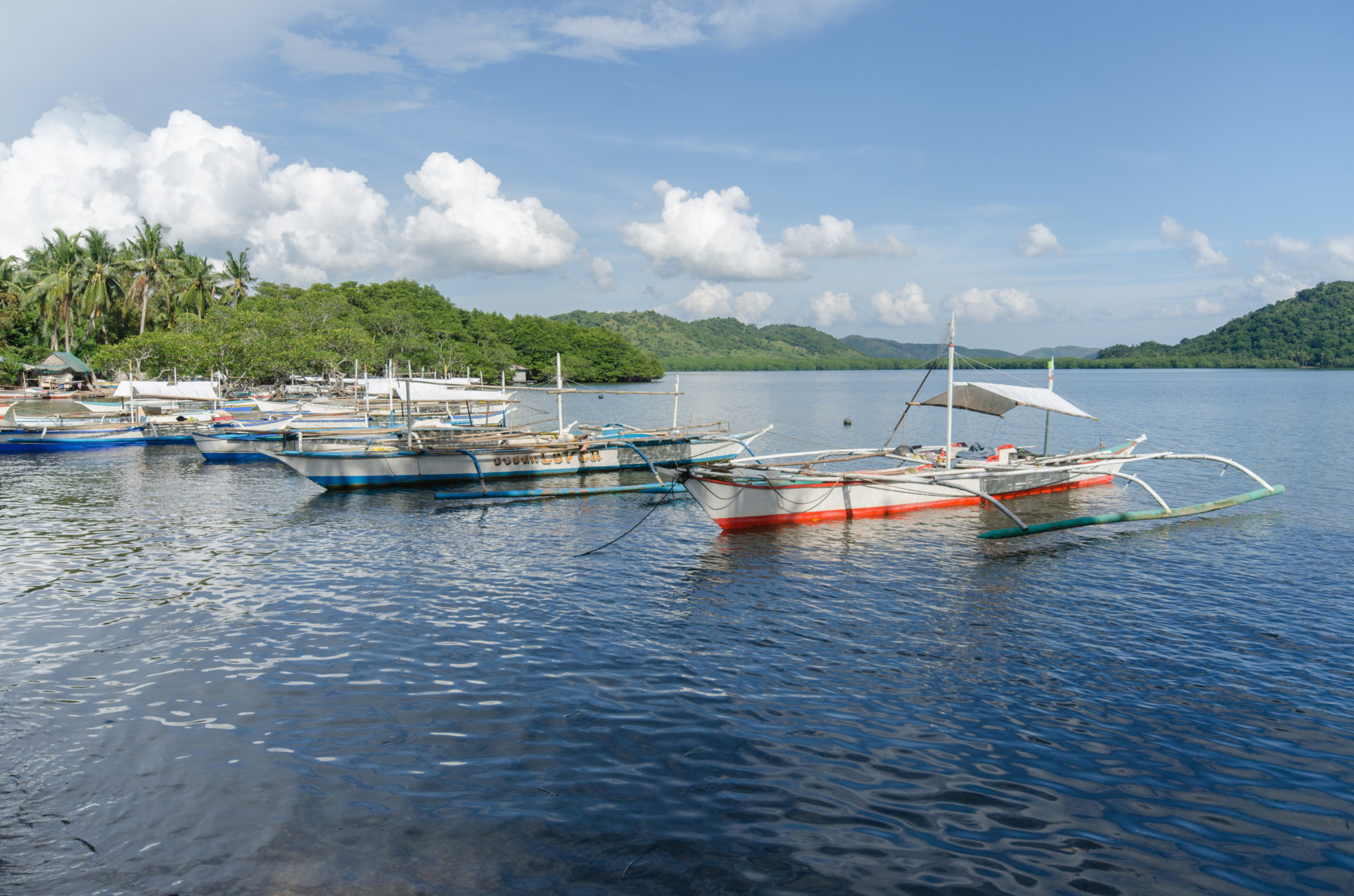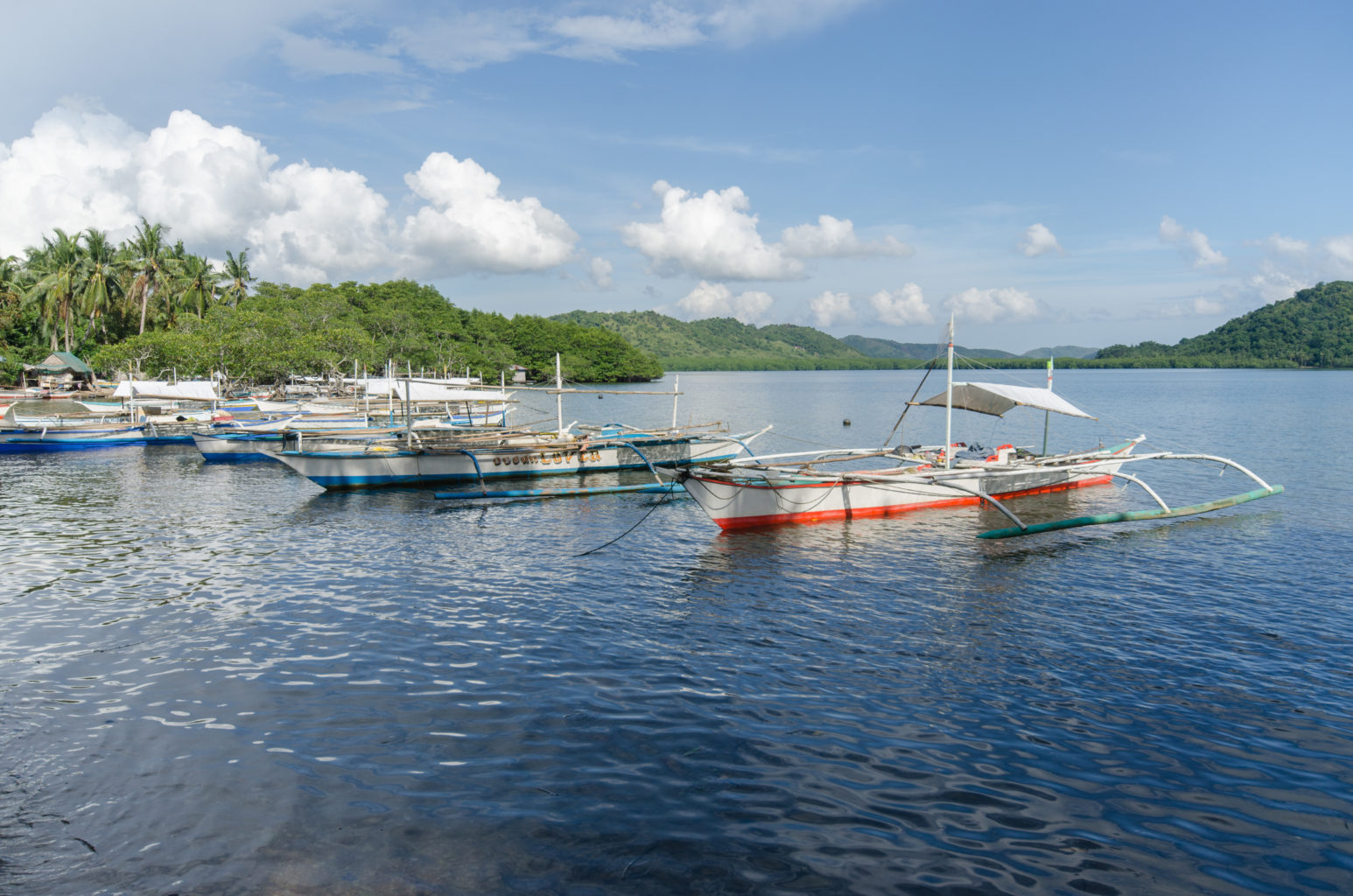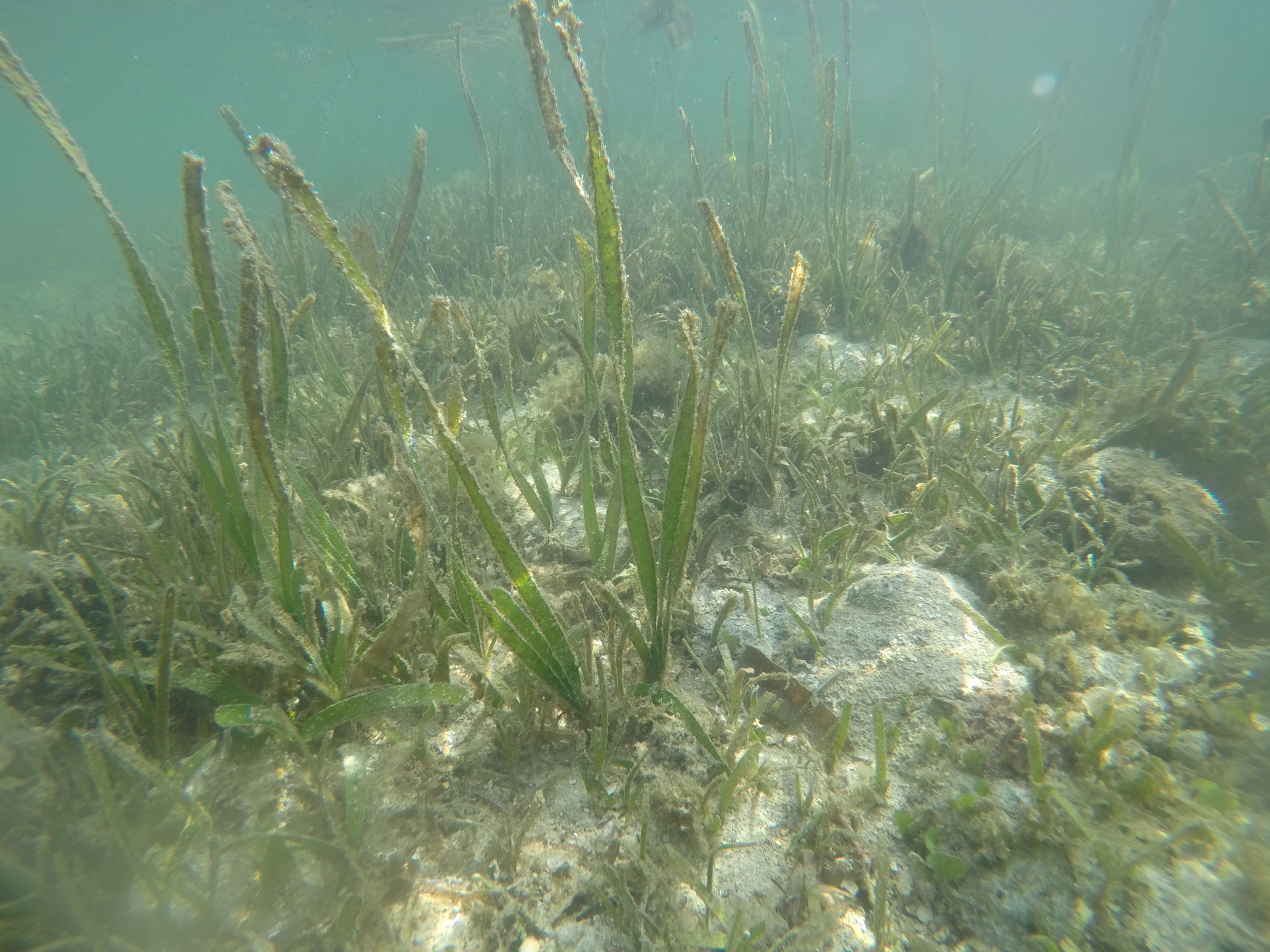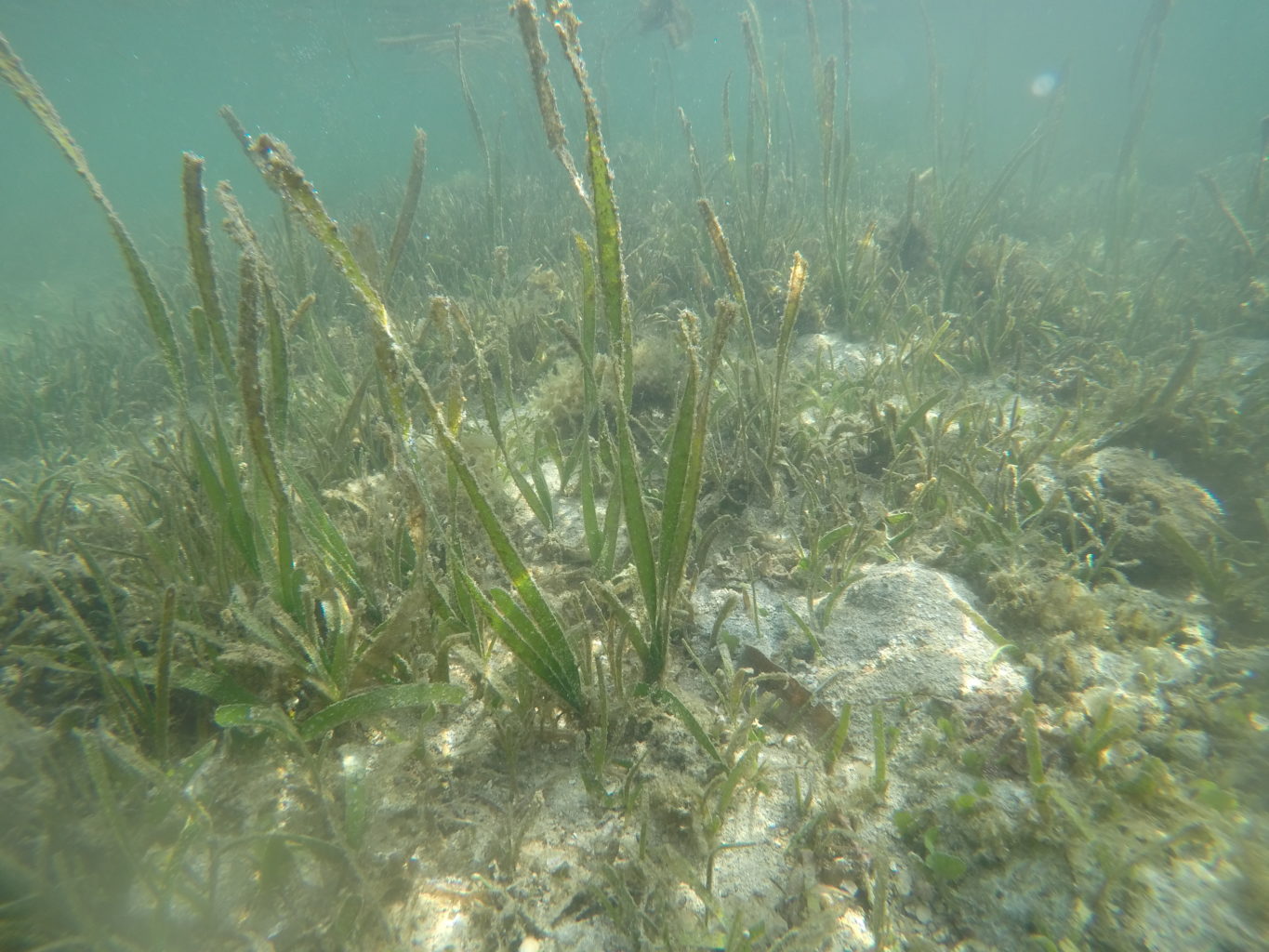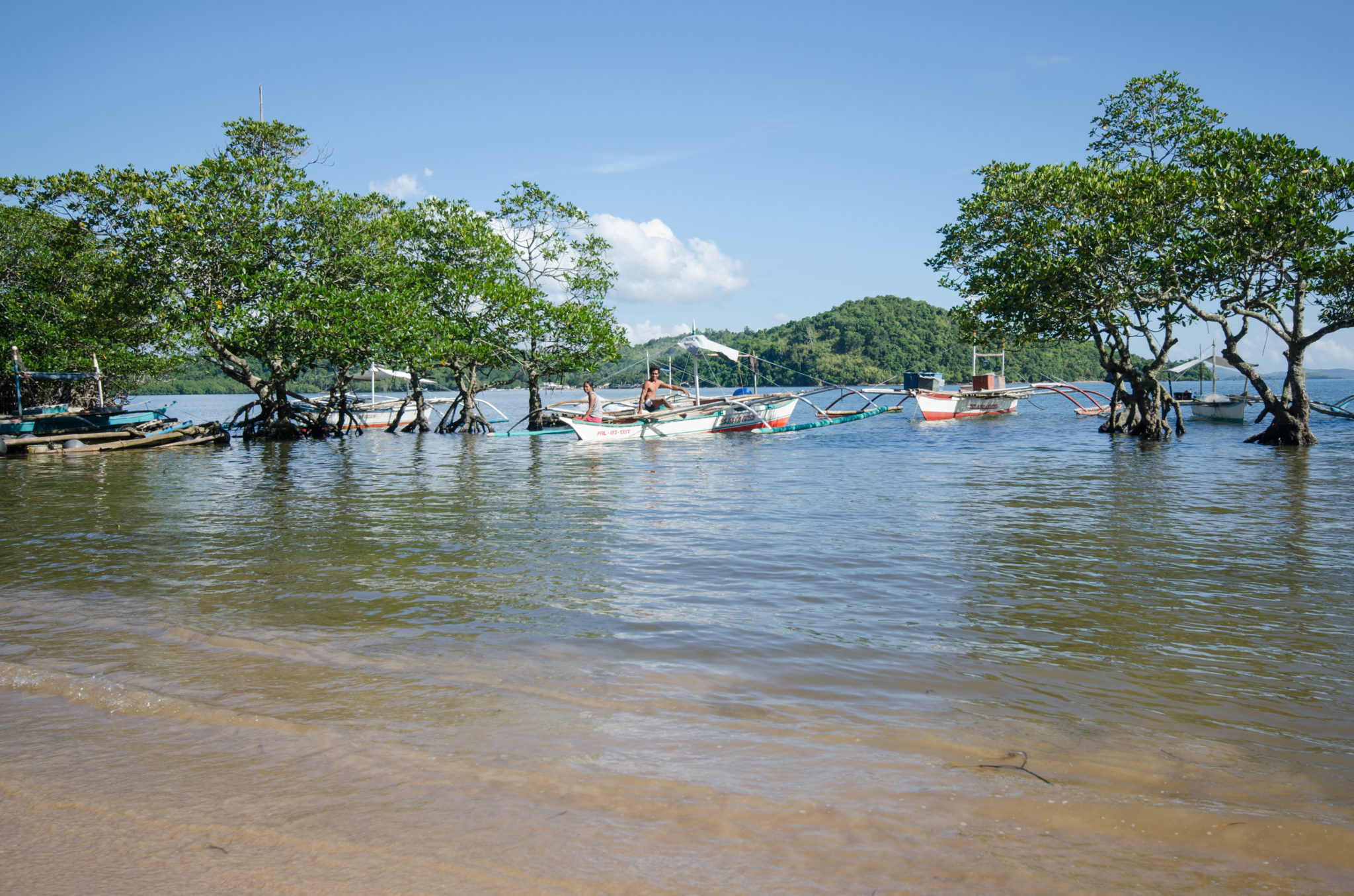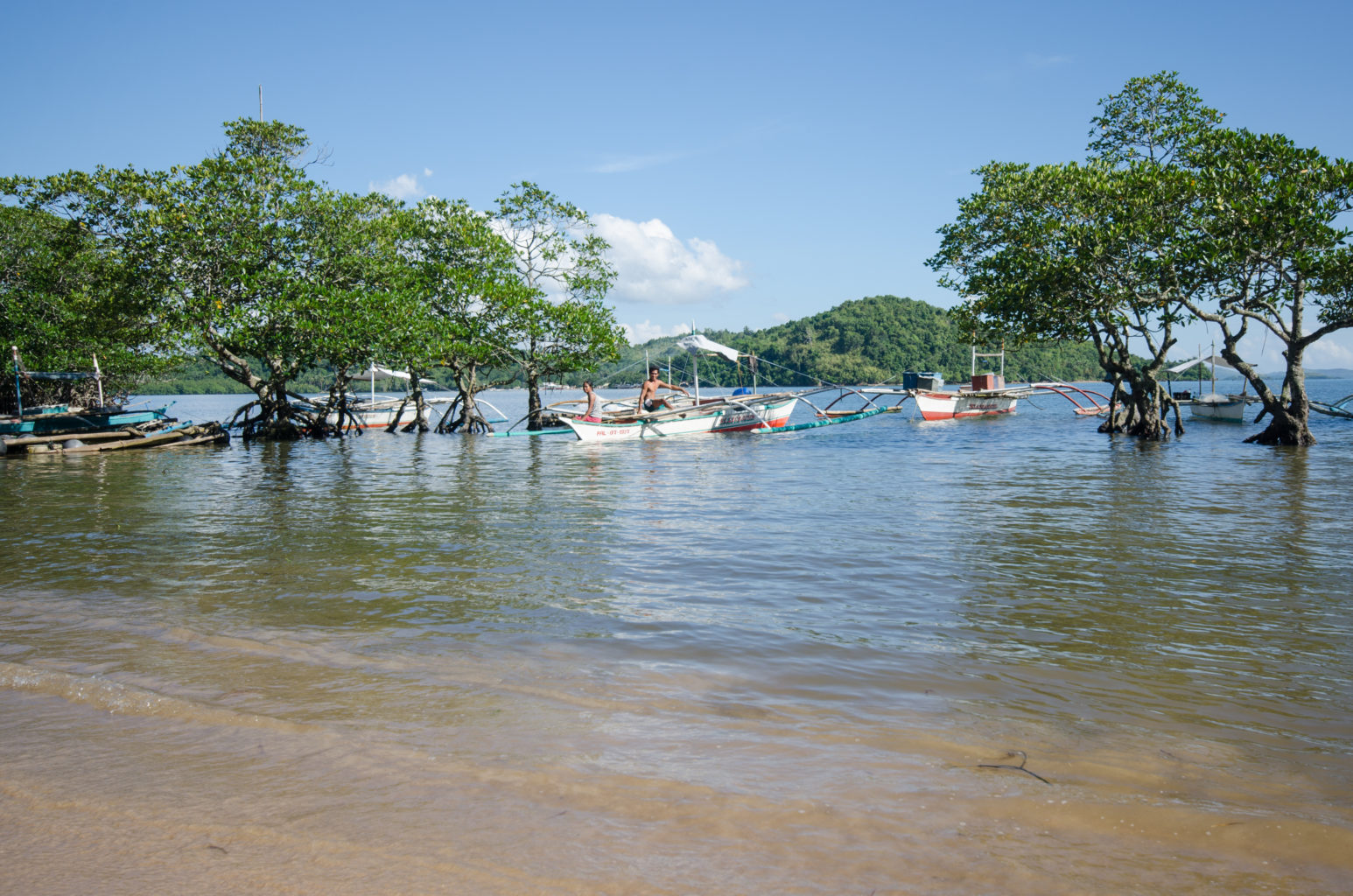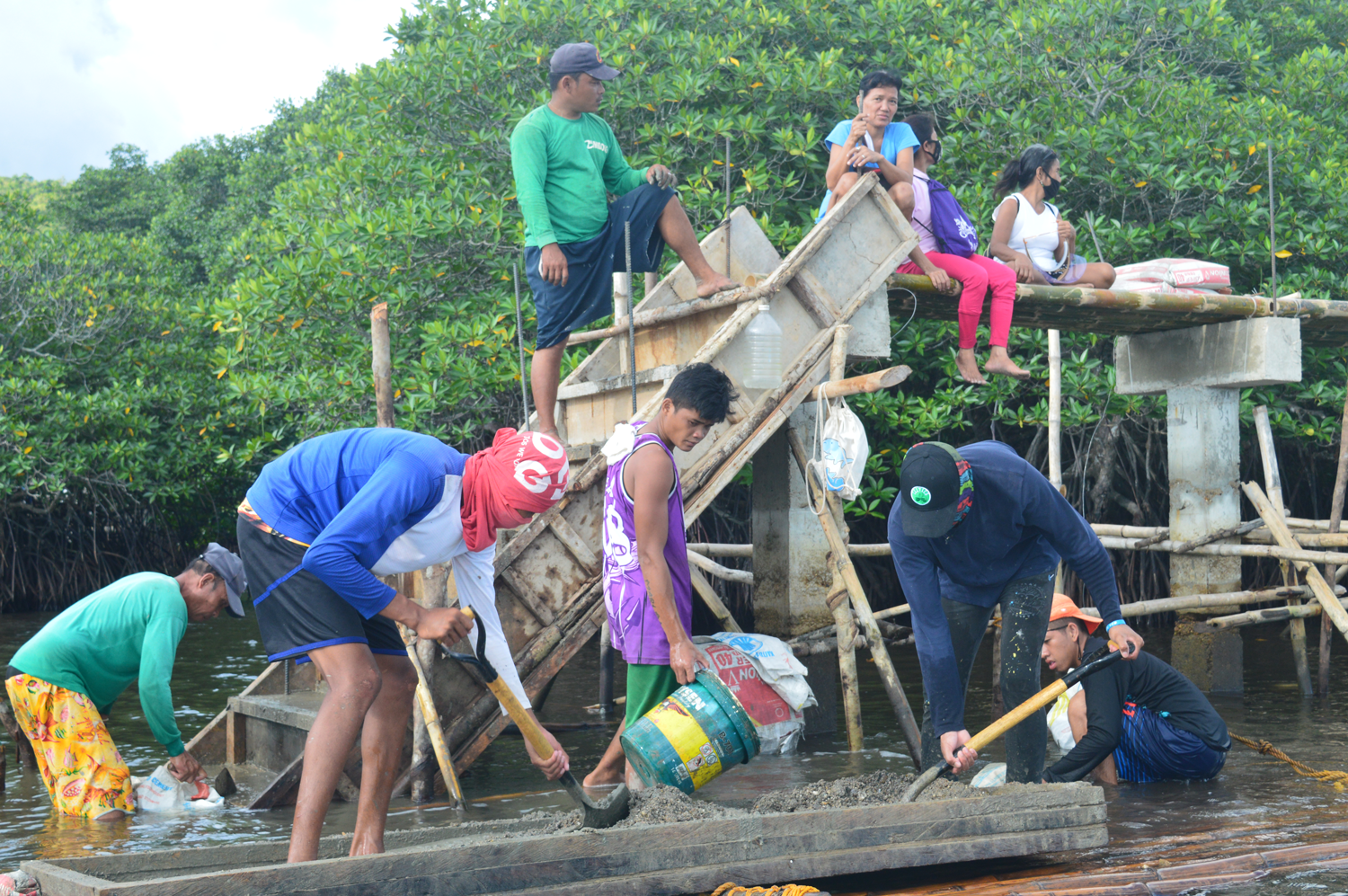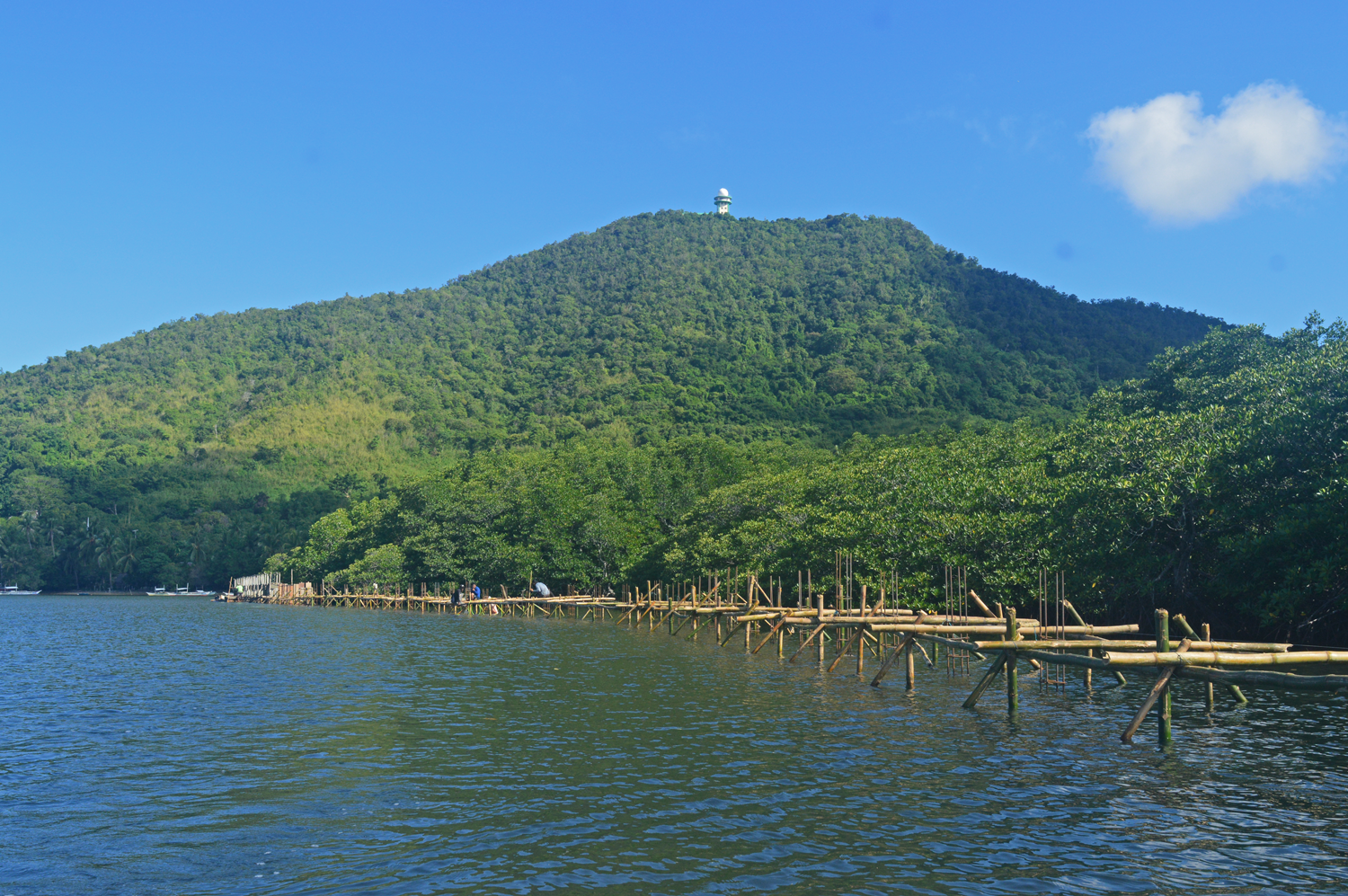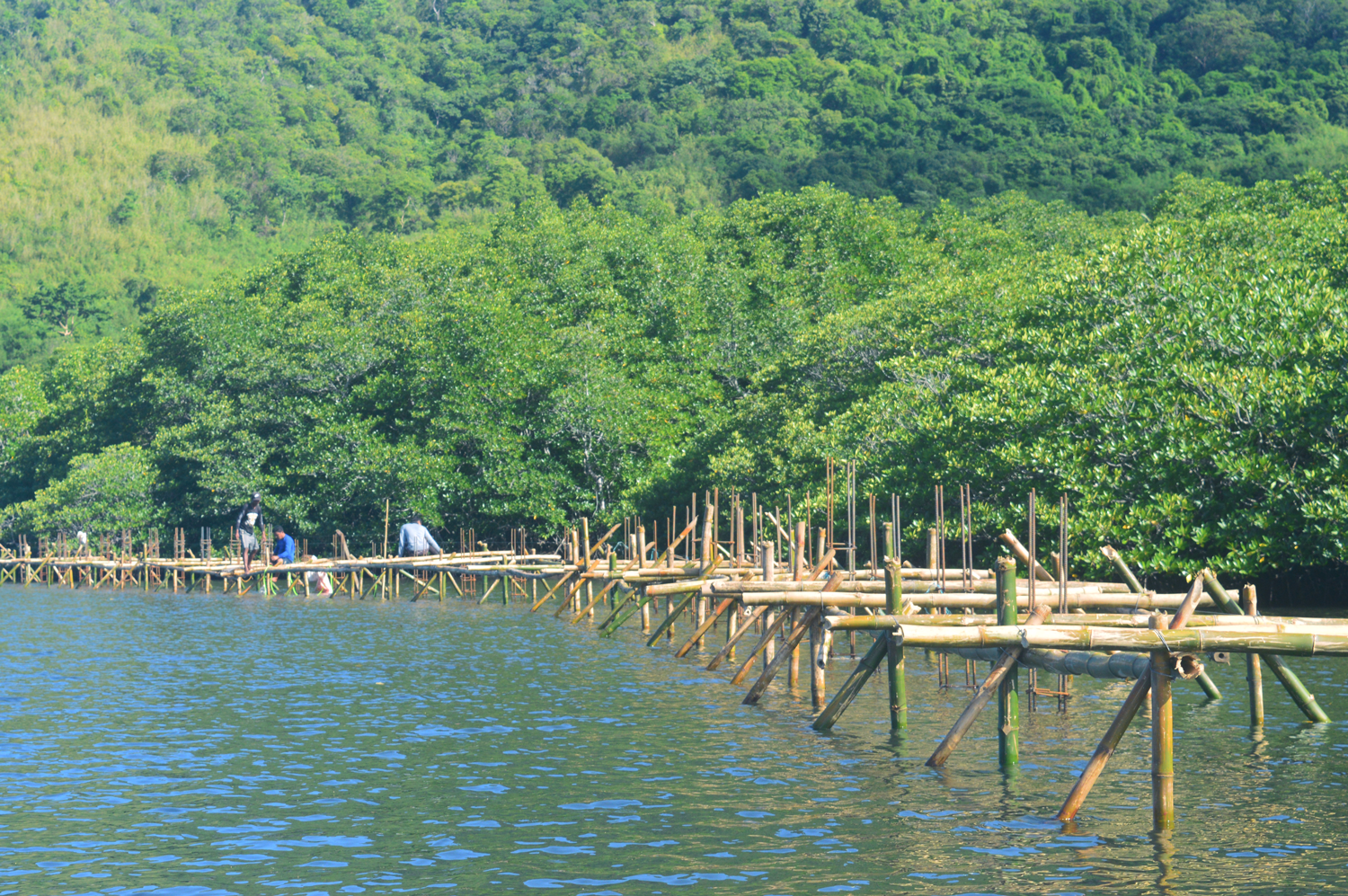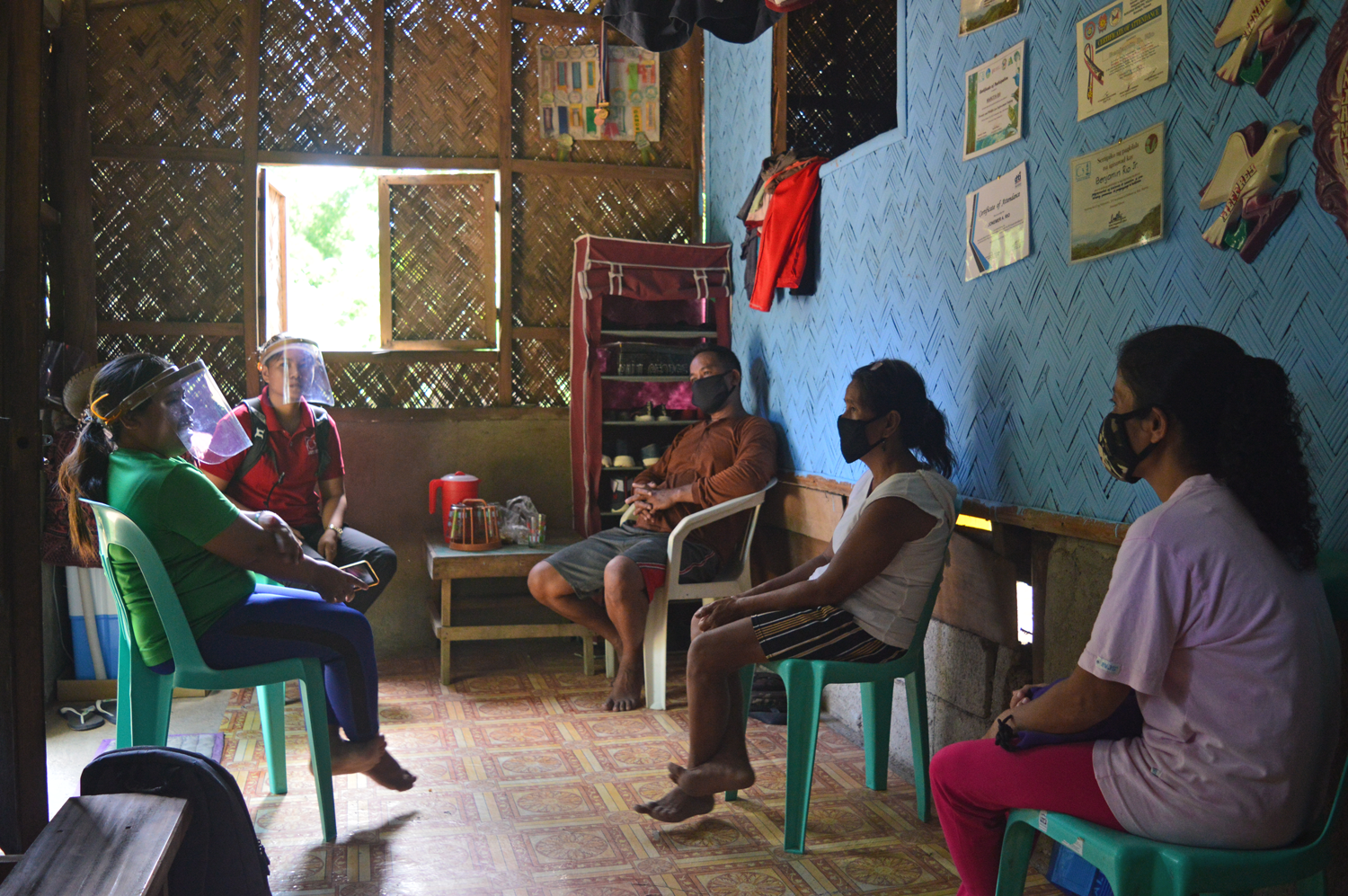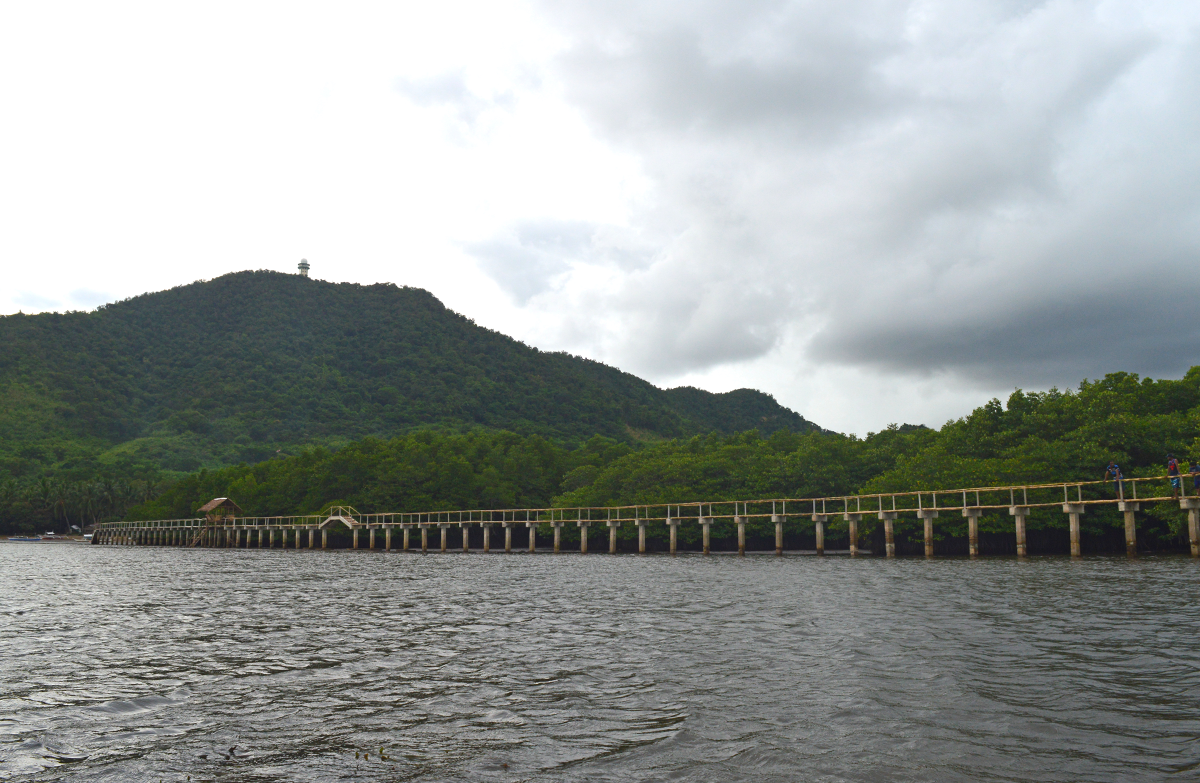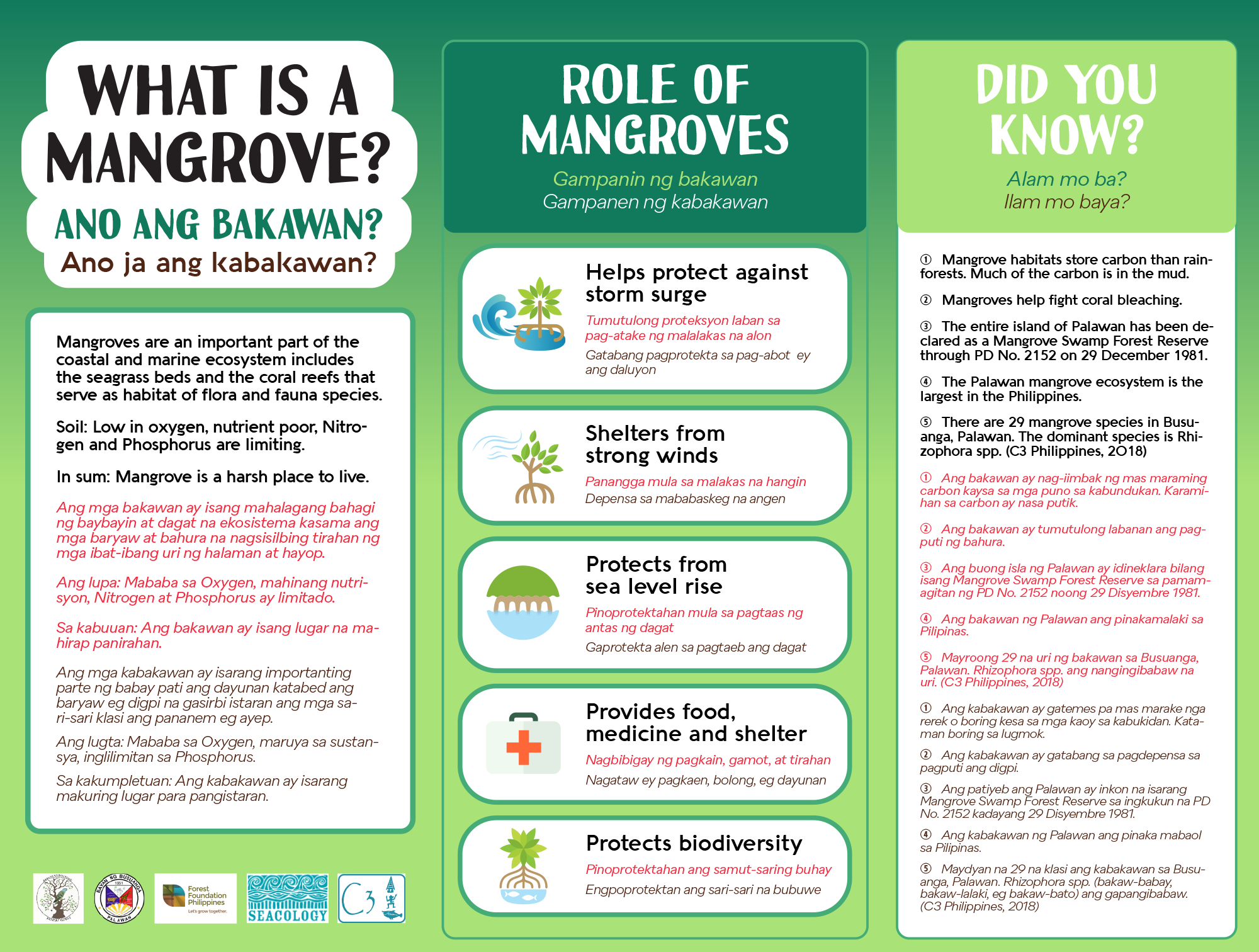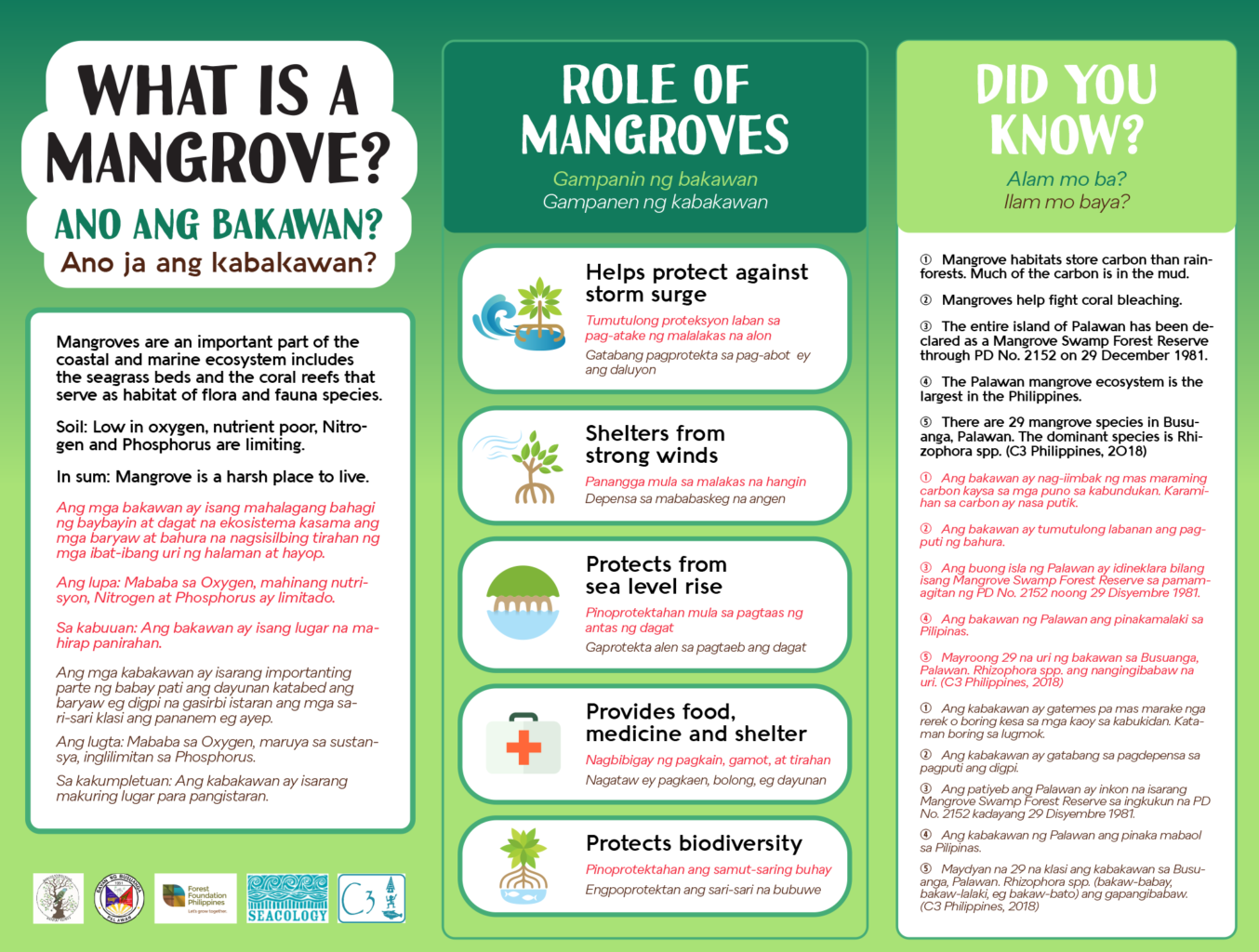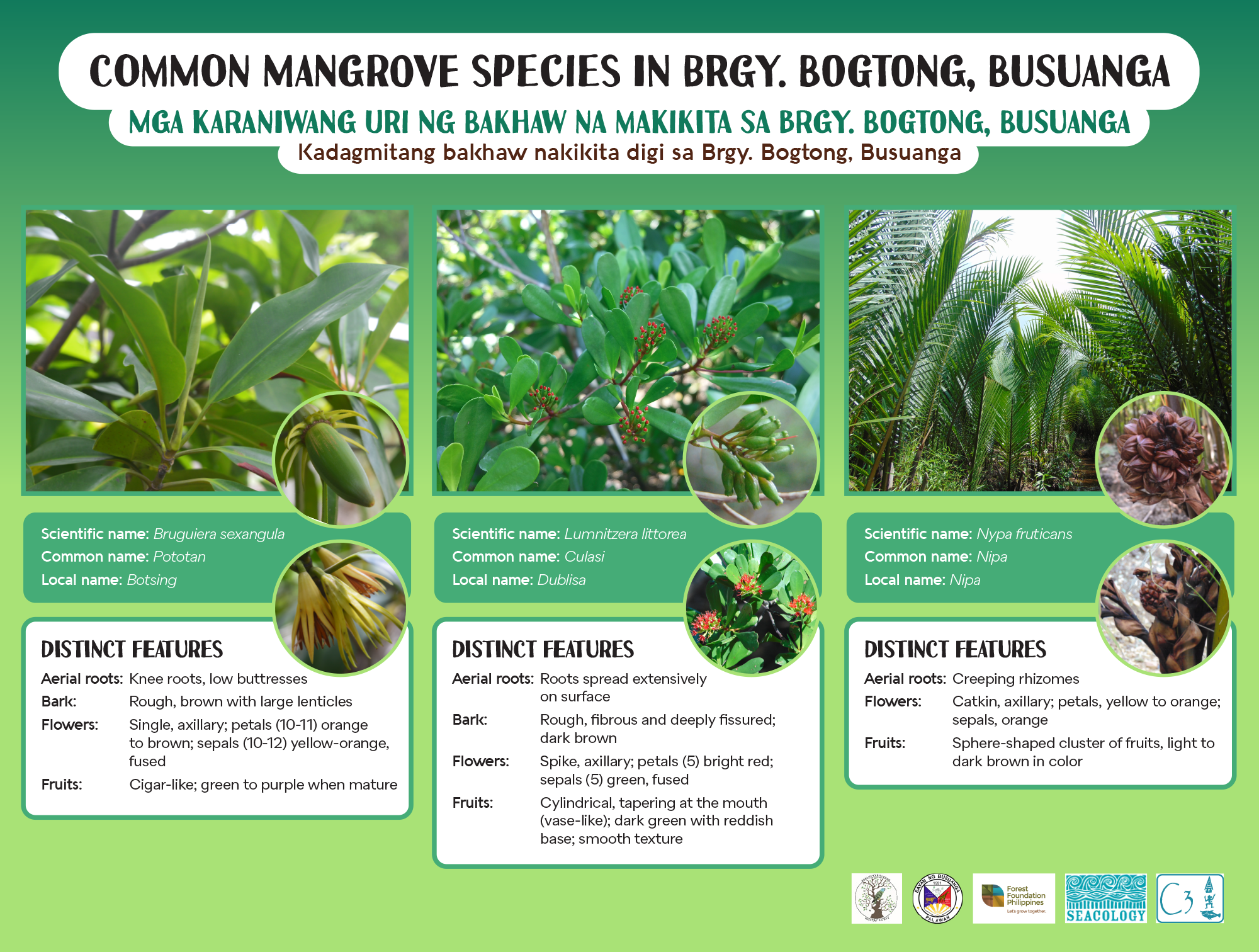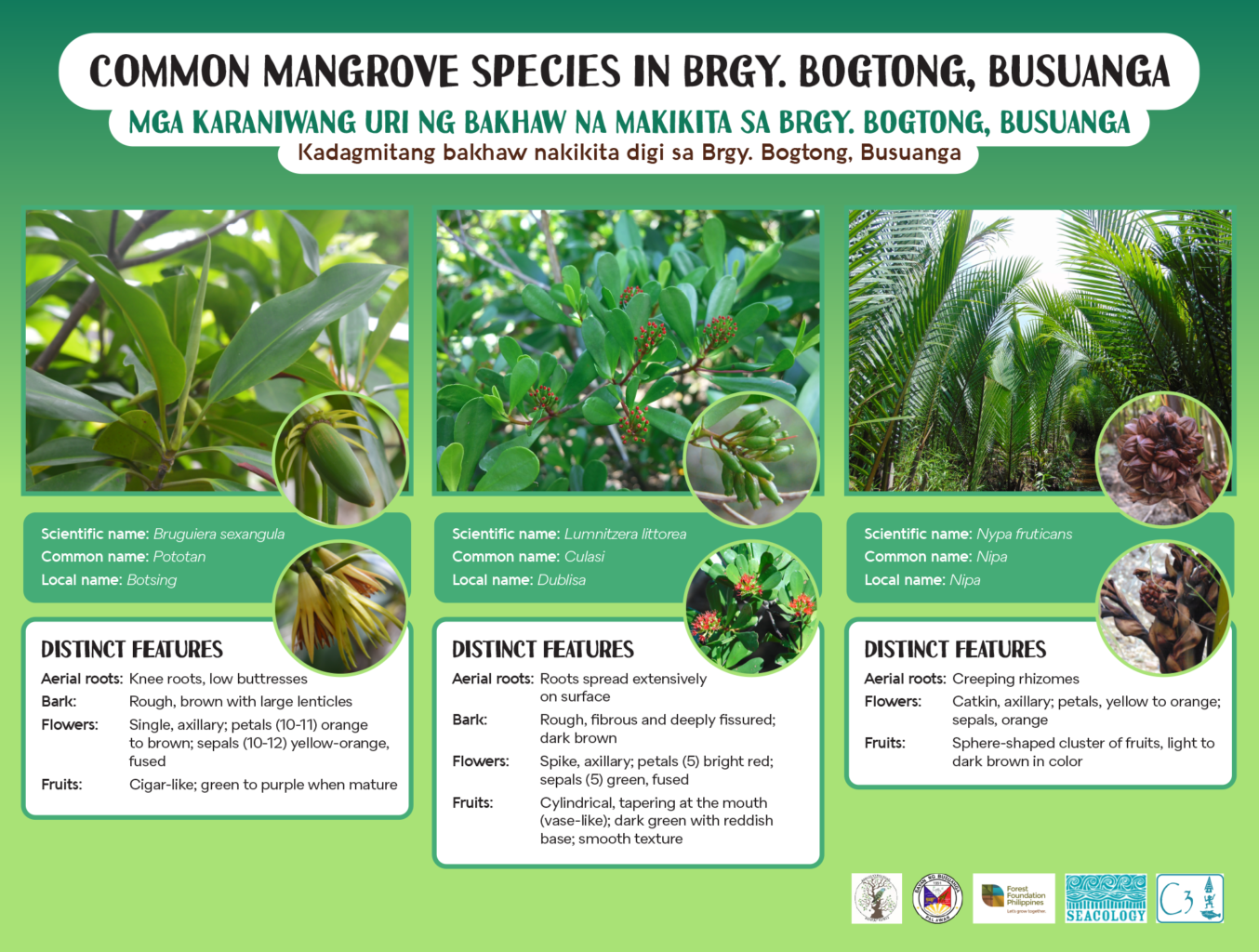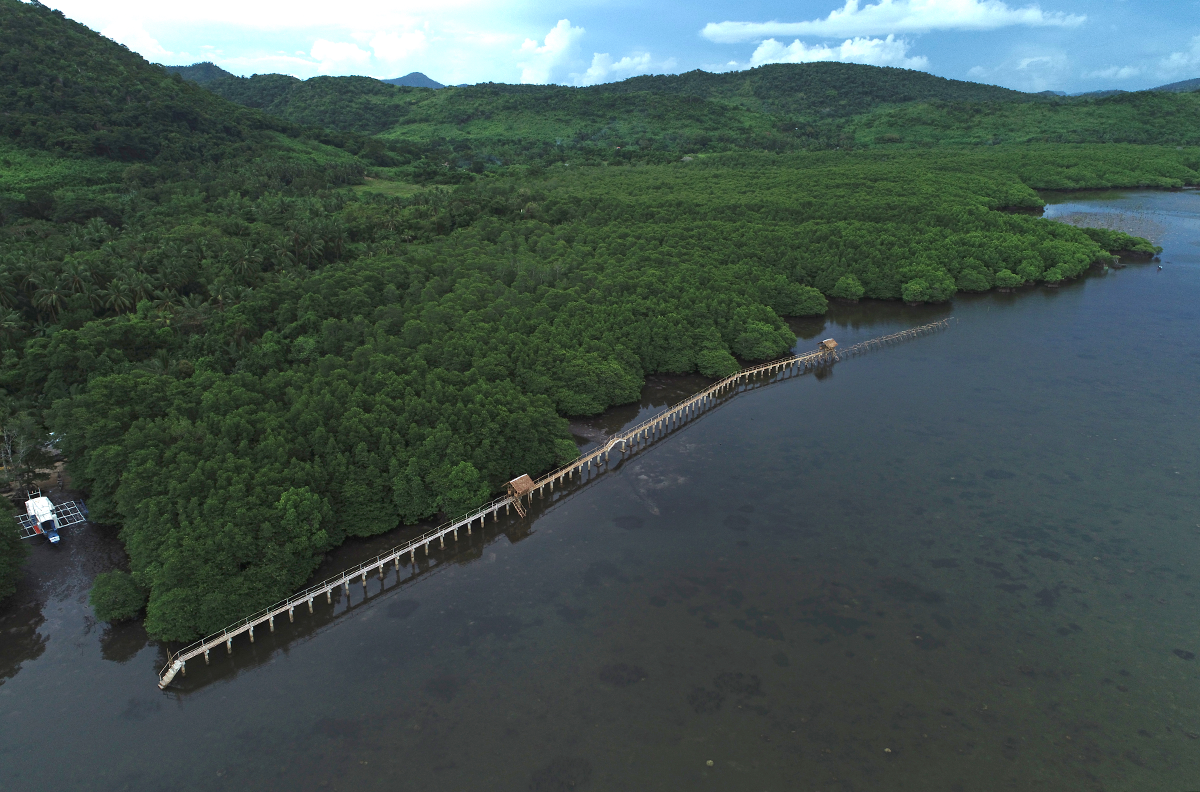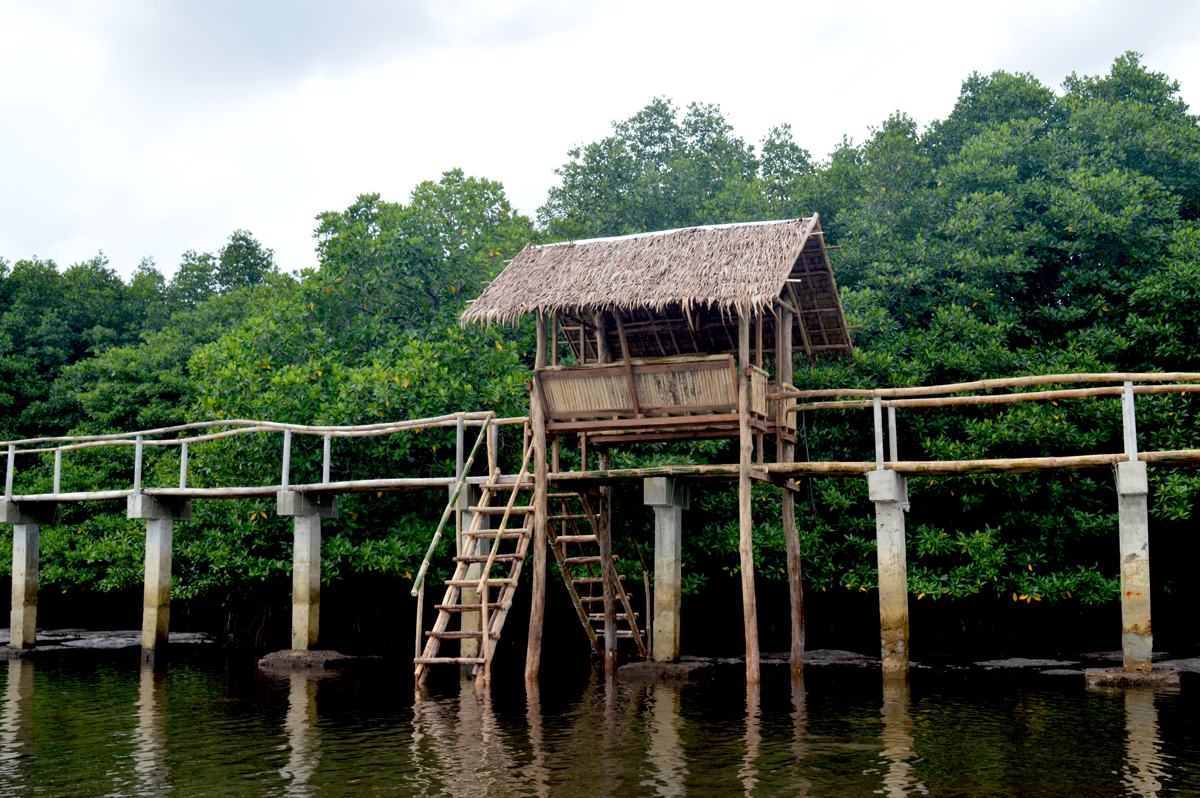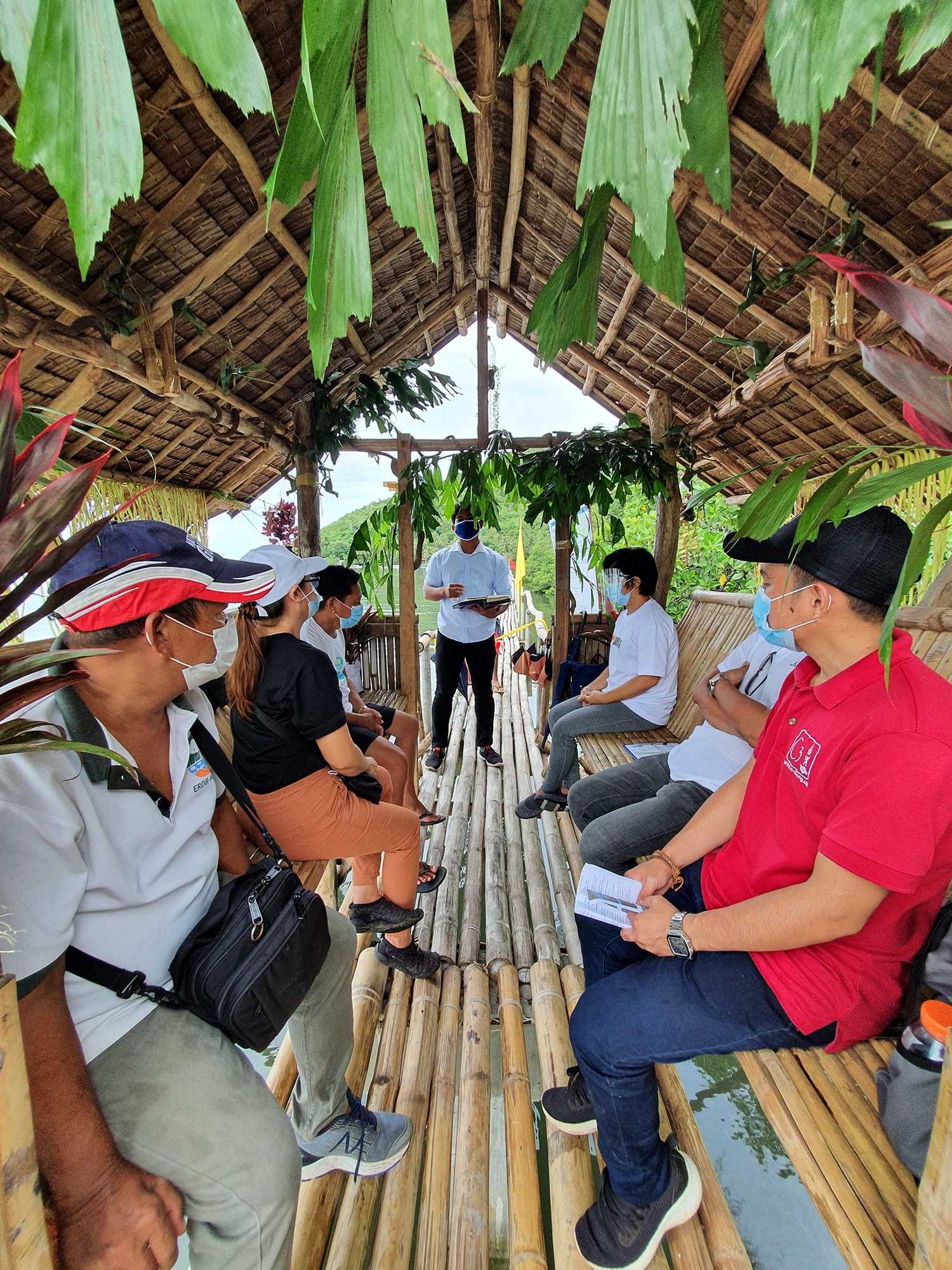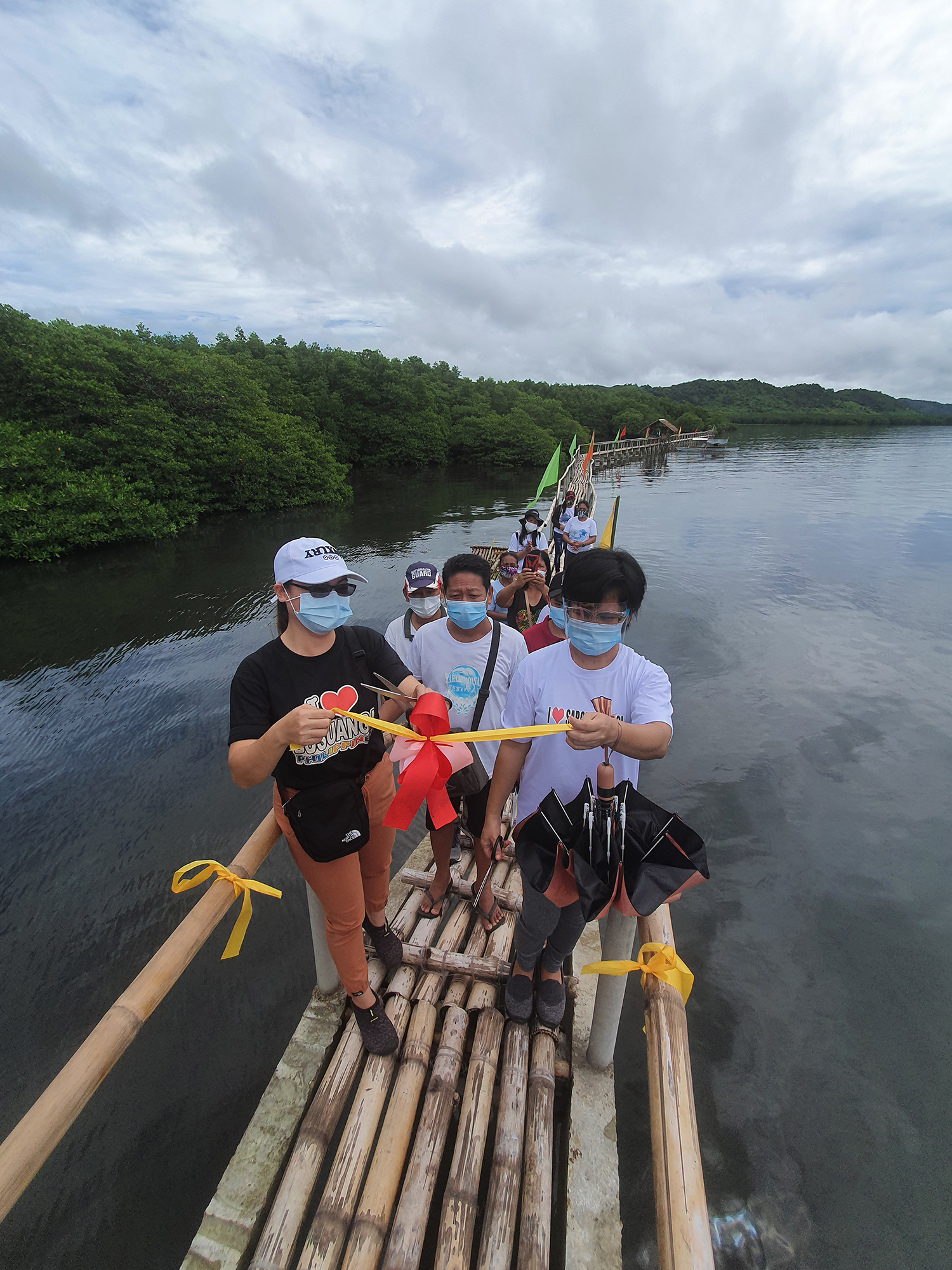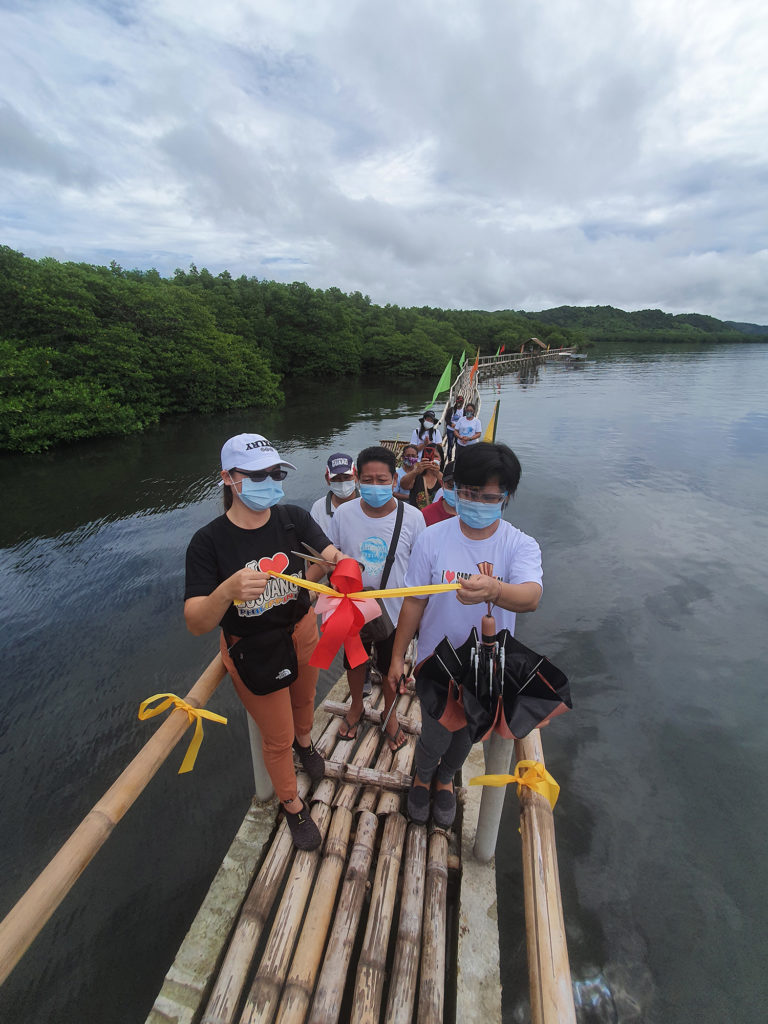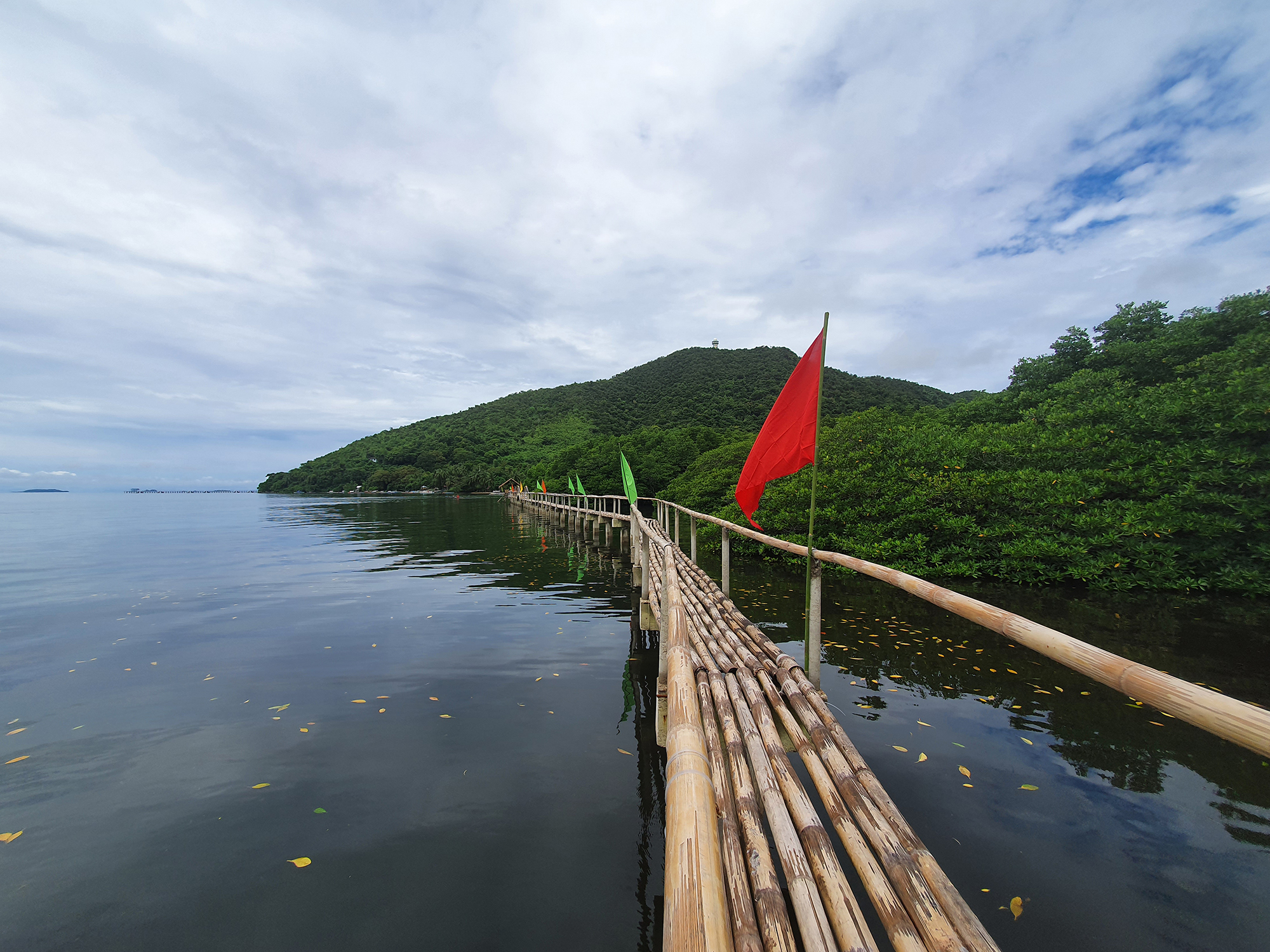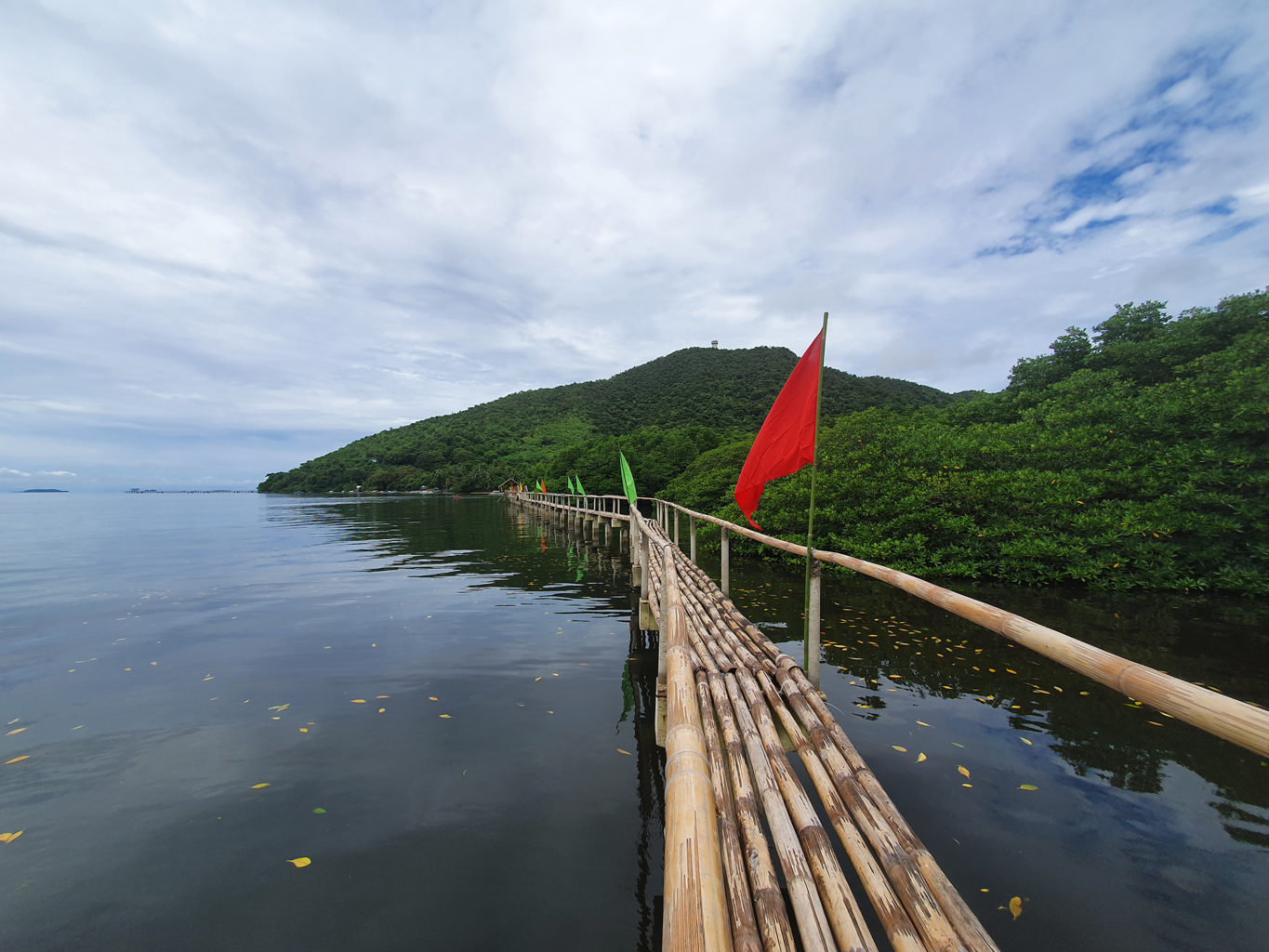Villagers on beautiful Busuanga Island are building a boardwalk along their thriving mangrove forest. The walkway will attract tourists and also help preserve the mangrove forests, coral reefs, and seagrass around the island, in Palawan Province. Because these habitats support both fishing and tourism, they are crucial to the rural economy.
The 969-acre Sagrada-Bogtong-Concepcion Marine Protected Area contains reefs, seagrass, and many species of mangrove trees. The entire area is a no-take zone, and the reefs have a live coral cover of 60 to 75%. In addition to common reef fishes, there are reports of black-tip sharks, green and hawksbill turtles, and dolphins. Dugongs drift through the seagrass beds.
Barangay Bogtong, population 1,076, is a village on the island. It has 237 acres of mangroves, which are part of the protected area. Still, people have cut the trees for charcoal, fuel, and poles. Worse, people have cleared areas for fishponds. When the fish farmers abandon these spots–as they typically do after a few years–they leave treeless, polluted sites.
With the enthusiastic support of the village, about 20 residents created a conservation organization called 3BG. In 2016, the group helped establish a protected forest area. They also operate a mangrove nursery and have rehabilitated 50 acres of mangroves. The group works with an NGO called Community Centered Conservation (C3 Philippines), which helps communities conserve coastal habitats. Its members have authority to enforce the MPA rules, and patrol it by boat daily.
The group has committed to expanding its efforts for 15 years. It is building a 50-meter boardwalk through the mangroves. With a Seacology grant, it will add another 200 meters with viewing and resting areas. This will:
- Allow better monitoring of the mangroves.
- Attract birders, kayakers, and hikers. Local people will sell food and handicrafts, and won’t have to rely just on fishing as a livelihood. The presence of tourists will discourage poachers.
- Provide a place to teach children about the environment.
- Give residents more pride in their unique natural resources—and a sense of control over their fate.


